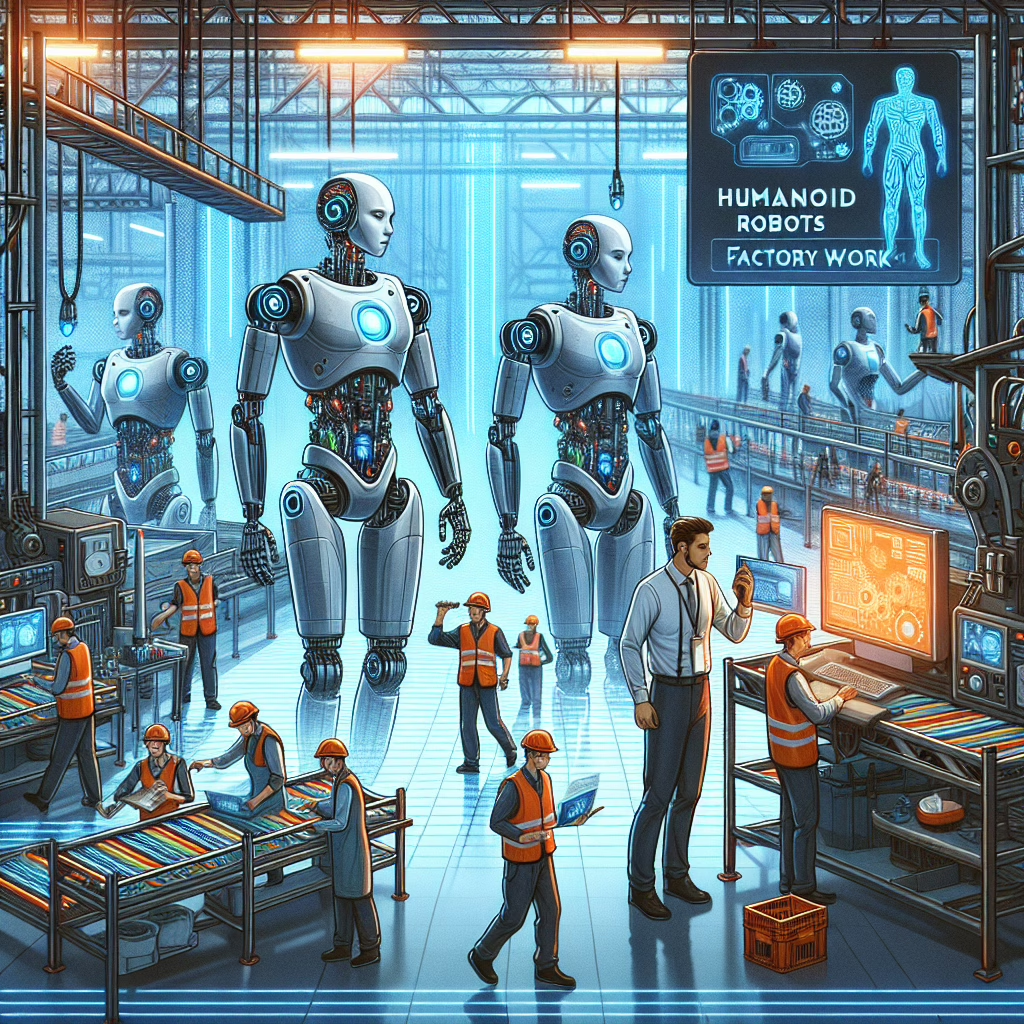Welcome to the future! As we leap into 2025, the spotlight shines brightly on humanoid robots and their role as factory workers. Yes, you heard that right! These shiny, chrome-plated pals are not just for sci-fi movies anymore. They’re ready to roll up their mechanical sleeves and dive into the nitty-gritty of factory life. Let’s explore how these robots will transform industries while bringing a sprinkle of joy and efficiency.
Humanoid Robots: The New Factory Superstars
Imagine walking into a factory where the workforce is not just human but also humanoid robots! As technology advances, factories are transforming into high-tech playgrounds where robots assist their human counterparts. These humanoid robot factory workers are designed to perform tasks ranging from assembly line work to quality control. With their nimble fingers and sharp sensors, they’ll tackle repetitive tasks with ease—leaving humans free to unleash their creative potential.
But wait, there’s more! According to industry experts, humanoid robots will help streamline operations, reduce costs, and even improve workplace safety. It’s like having a super-efficient coworker who never takes a coffee break or needs a day off (sorry, human colleagues!). By integrating humanoid robots, factories can achieve unprecedented productivity levels.
The Future of Work: A Humanoid Perspective
So what does this mean for workers? Fear not! The rise of humanoid robot factory workers doesn’t spell doom for jobs; it’s more like an upgrade to our current system. These robots will take over mundane tasks while humans can focus on strategy, creativity, and innovation. Think of it as having your very own robotic assistant—like a personal chef who can whip up gourmet meals while you focus on your culinary masterpieces!
With humanoid robots handling tedious assembly lines, humans will have the opportunity to engage in more stimulating work. This shift could lead to increased job satisfaction, as employees can finally escape the monotony of repetitive tasks. Who wouldn’t want that? As we integrate robots into the workforce, we pave the way for a collaborative environment where creativity thrives alongside automation.
Training Our Robotic Friends
Of course, even humanoid robots need training! Factories will invest in teaching these robots how to adapt and learn from their environment. Thanks to artificial intelligence (AI), these mechanical marvels will pick up new skills faster than you can say “upskill.” With machine learning algorithms at play, these robots could soon be capable of making decisions based on real-time data analysis—who knew robots could be such quick learners?
This training process also opens up exciting possibilities for collaboration between humans and humanoid robots. Picture this: a human worker mentoring a robot on the nuances of craftsmanship while the robot provides data-driven insights. It’s teamwork at its finest! This partnership can lead to an innovative approach to problem-solving in manufacturing environments.
The Quirky Side of Humanoid Robots
Let’s not forget the lighter side of having humanoid robot factory workers around! Imagine a robot cracking jokes during lunch breaks or performing silly dances while waiting for instructions. These delightful additions could create a vibrant workplace culture filled with laughter and camaraderie.
As these robots become more integrated into factories, they may even develop their own quirky personalities—who knows? You might end up with a robot that insists on wearing sunglasses while working just because it thinks it looks cool! Such fun features can help ease anxieties about automation, making robots seem more approachable to human workers.
Challenges Ahead: Keeping It Real
While the prospect of humanoid robots is exciting, challenges remain. Issues like ethics in automation, job displacement fears, and ensuring that robots are programmed with safety measures need careful consideration. But don’t worry! With a touch of foresight and planning, we can create a harmonious relationship between humans and our new robotic colleagues. Keeping communication open about these advancements will help address concerns and find collaborative solutions.
Moreover, as we embrace this technological shift in 2025, we should prioritize education and retraining programs for those whose jobs might change due to automation. After all, it’s better to prepare for an evolving workforce than to be caught off guard by robotic advancements. Initiatives that promote skill development will ensure every worker adapts successfully, creating a future that benefits all.
Conclusion: Embracing Our Robotic Future
In conclusion, 2025 promises to be a fascinating year for industries as humanoid robot factory workers take center stage. They’ll not only enhance productivity but also add an element of fun to the workplace. So let’s welcome our new robotic friends with open arms—and maybe a few dance moves!
What do you think about this robotic revolution? Are you excited or apprehensive about humanoid robots entering our factories? Share your thoughts in the comments below!
Special thanks to Wired for providing the original article that inspired this post! And for more insights into the future of factory automation and technology, check out our other articles, such as Microsoft 365 and Azure revenues push company results to another record high and Decentralization, Not Hyperscalers, Will Shape the Future of EU Cloud Data.

